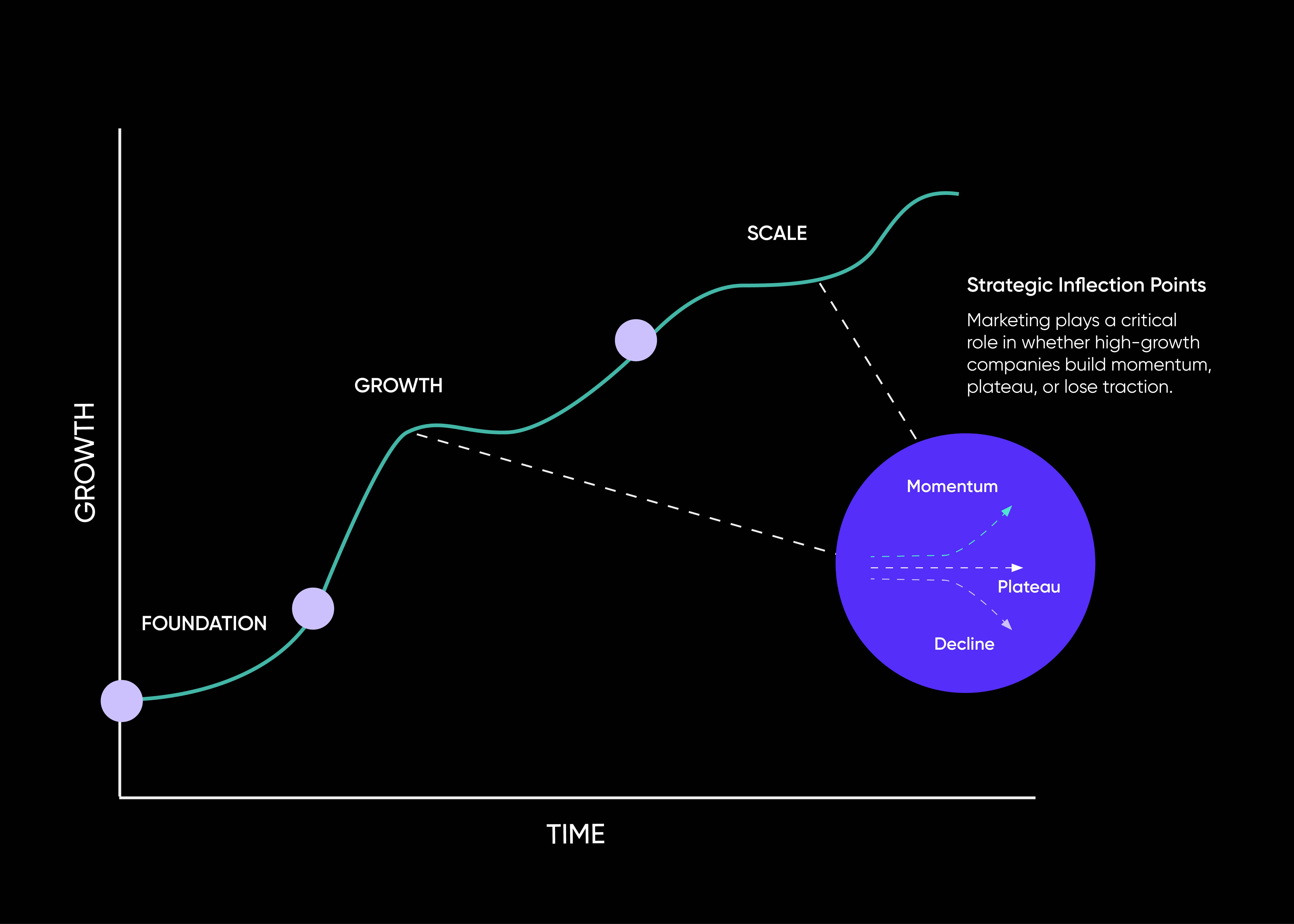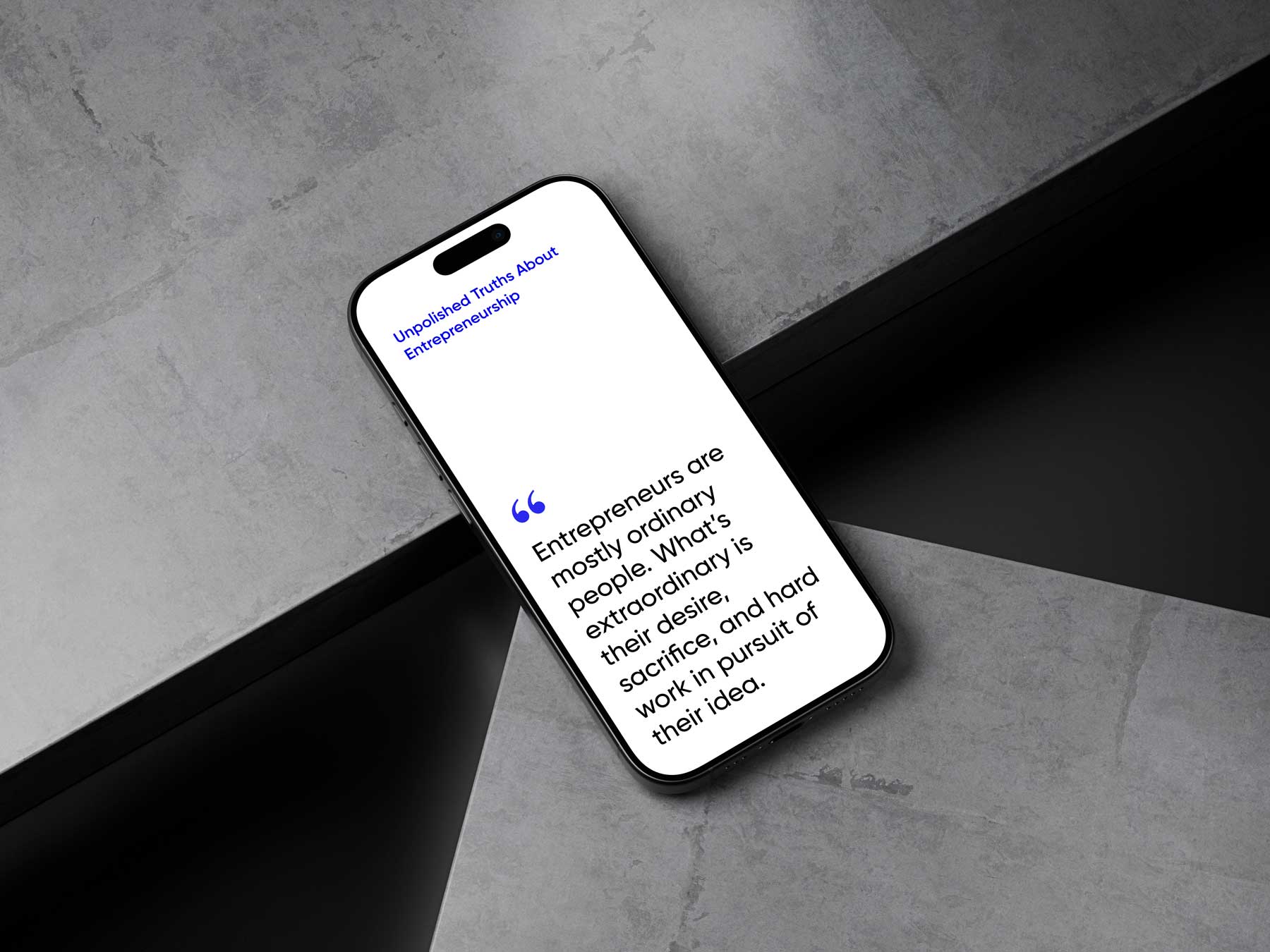What High-Growth Companies Get Right at Every Stage with Strategic Marketing
Discover how strategic marketing empowers high-growth companies to attract investment, accelerate momentum, and scale successfully.

How to use marketing to attract capital, accelerate momentum, and create long-term value.
Let’s be honest, raising capital is a big moment. But it’s often the starting block, not the finish line.
At Flo., we’ve supported over $580 million in capital raises for high-growth companies in digital infrastructure, clean energy, and emerging tech. And that experience has taught us a few things. The biggest lesson? Great marketing doesn’t just tell your story. It builds the business behind it.
When investors back your company, they’re betting on your ability to move quickly, connect with the market, and grow as efficiently as possible. Unfortunately, this is where many companies fail. And marketing gets overlooked, underfunded, or tacked on too late.
The companies that succeed are the ones that treat marketing as a business priority from the start. Keep reading to find out how.
The Three Inflection Points Where Marketing Is Critical
High-growth companies don’t wait until sales need help to think about marketing. They plan for it at every critical moment.

1. Before the Raise: Positioning the Business for Investment
Investors aren’t just evaluating your product or solution. They’re evaluating the market, your brand, your revenue potential, and your team’s ability to execute.
A lot of bootstrapped companies take the DIY route early on — a quick logo from Fiverr, a website from a friend, and the founder’s PowerPoint deck doubling as the brand’s core messaging. This might get you in the door for some conversations, but it won’t necessarily get you funded.
Waiting to “do marketing later” is one of the biggest mistakes we see. If you’re serious about raising capital, your brand and initial go-to-market plan need to be just as strong as your product.
When done right, branding and marketing at this stage can do a lot of heavy lifting. It can:
- Build confidence that your team has the vision and the plan to execute
- Speak directly to what your investors care about
- Show you know the market and exactly how to reach it
- Position you as a company ready to scale, not just pitch
- Shorten the raise timeline so you can get back to business
If you’re at this stage, here are the top three things to consider:
- Strategic brands attract the right kind of attention.
The right story, told the right way, builds trust with both investors and customers. Yes, building a real brand takes time and resources. But when done right, it saves you time, builds traction faster, and helps you show up like a company that’s already playing at the next level.
- It’s not just branding—it’s building the business.
This isn’t about picking colors or designing a cool logo. It’s about defining your value, articulating it, and aligning your internal story with how you want the market to see you. That clarity gives investors confidence and helps your team focus.
- Choose a partner who gets it.
Branding and marketing partners aren’t one-size-fits-all. Look for a team that knows how to speak to investors, understands go-to-market strategy, and can bridge the gap between what you’re building and how it needs to show up in the world. This alignment early on can mean the difference between momentum and missed opportunities.
2. After the Raise: Proving Scalability
This is where the pressure sets in. Expectations are high. Marketing needs to shift from “storytelling for funding” to building a full ecosystem for growth.
For some companies, this is the moment to bring in a CMO or VP of Marketing to lead the go-to-market strategy. Others keep things lean, hiring a few strong doers and betting that execution will carry the load. There’s no one-size-fits-all approach — and it doesn’t have to be one or the other.
What matters most is that someone is owning the strategy and connecting it to the bigger business picture. And that there’s focused, strategic execution to match. You need both. Because at this stage, the lines between brand, demand, sales, and growth need to be tightly connected.
Once the investment hits your account, the clock starts ticking. Investors want to see momentum. Not just effort, but results.
What marketing should be doing at this stage:
- Aligning the team around a focused, actionable go-to-market strategy
- Building infrastructure to support integrated marketing and sales at scale
- Creating consistency across the entire customer experience
- Amplifying the brand’s visibility while strengthening market credibility
- Tracking performance in real-time and knowing when to pivot
- Learning fast, failing faster, and refining to what works
If you didn’t establish a strong brand and initial go-to-market before the capital raise, all of the above isn’t going to be easy. Your team will either be scrambling to build this foundation now or stuck stitching together disconnected tactics with no clear direction. Both slow momentum down.
If you’re at this stage, here are the top three things to consider:
- Strategy needs to lead execution.
You can’t afford to plan in a vacuum or expect results without clear direction. The more integrated and strategic you are in this phase, the more momentum you will achieve and the happier your investors will be.
- Brand and GTM alignment is non-negotiable.
Customers and investors need to see the same story, clearly and consistently, across every touchpoint. That means your internal team needs to be able to tell it, and execute it.
- Build systems that scale.
Marketing shouldn’t be reinventing the wheel every month. Create repeatable processes and performance feedback loops that support long-term growth. Empower your team with the focus they need to deliver without second-guessing.
Hire and scale smart. If a full-time senior marketing leader isn’t in the budget, bring in a Fractional one. The right person can give you executive-level insight, strategic direction, and real traction — without the overhead. And be realistic about building your team. Not everything needs to be handled in-house right away. Partner with an outsourced group that can fill in the gaps, bring proven expertise, and give you the breathing room to hire in-house when the time is right.
3. Scaling: Strengthening the Brand as You Grow
Growth brings complexity. Whether you’re adding headcount, entering new markets, launching new products, or considering M&As, one thing becomes non-negotiable at this stage: clarity.
You’ll start to feel the cracks without a strong brand, aligned messaging, and a continued growth strategy. Confusion sets in. Sales teams go off-script. Customers struggle to see the value. And growth starts to stall.
In this scenario, marketing’s job isn’t growth. It’s to unify.
Marketing at this stage should be focused on:
- Keeping messaging consistent across every location, product/solution line, and team
- Building brand equity that elevates how partners, buyers, and investors see your business
- Driving demand that can support bigger pipeline goals
- Ensuring internal teams are aligned on not just what you do, but why it matters
- Supporting expansion with content, tools, and thought leadership that scale with you
Expansion is the moment when marketing needs to help the business grow without losing its true self. You’ve worked hard to build traction. Now it’s about protecting and amplifying it — at scale.
At this stage, here are the top three things to consider:
- Clarity at scale is everything.
Your message should be repeatable, adaptable, and consistent across every audience and channel.
- Your brand is now a multiplier.
A strong brand builds credibility in every new market you enter. It helps close deals, attract talent, and support long-term value creation.
- Don’t let growth equal complexity.
Scale doesn’t have to mean chaos. With the right strategies and systems in place, growth can feel focused, aligned, and intentional.
For some, this stage sets the scene for a successful exit. The team that launched and built the business may not be the same one that scales it. And that’s okay. If your brand and marketing have done their job at every step — from raising capital to building traction and expanding with intention — then you’ve done what you set out to do. Purpose fulfilled. Value created. And ideally, pockets full.
Quick Take
No matter which stage your company is in, strategic marketing plays an integral role in building your business.
After working with dozens of high-growth startups, we have learned there are critical inflection points when smart marketing can make or break your business: before you ask for money (when how you present yourself decides if investors say yes), right after you get funded (when you have to prove you can actually grow), and when you’re scaling (without losing what made you successful in the first place).
The key takeaway? Marketing doesn't just tell people about your company. It actually helps build a stronger business, and companies that make it a priority from the start are the ones that succeed long-term.
Not sure where to begin with your company’s marketing? Connect with our experts today to start the conversation.
Never miss an update.
Join our community for exclusive news, trends, and expert insights.

.svg)


